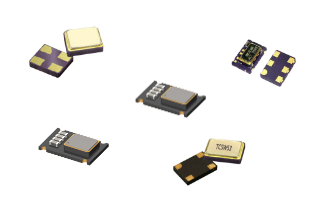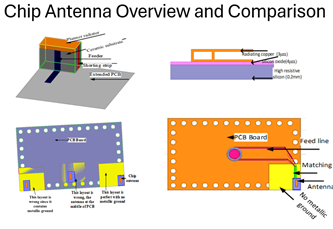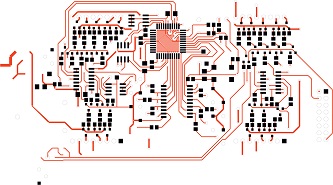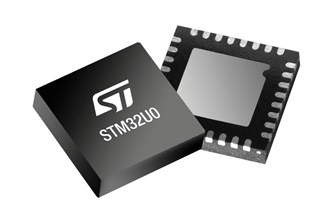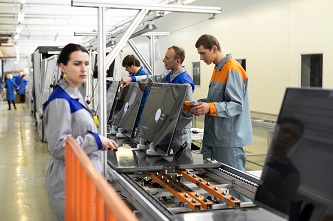This website uses cookies so that we can provide you with the best user experience possible. Cookie information is stored in your browser and performs functions such as recognising you when you return to our website and helping our team to understand which sections of the website you find most interesting and useful.
Intel Reveals Foundry Revenue for First Time, Anticipates H2 Upturn
Intel has recently disclosed revenue details from its foundry business for the first time, signaling optimism as semiconductor markets are expected to rebound in the latter half of 2024.
According to Pat Gelsinger, CEO of Intel, the company has transitioned to a new operating model, introducing Intel Products and Intel Foundry. Gelsinger stated, “Today, for the first time, we are reporting our results to reflect the new way in which we are running the company.”
Intel Foundry revenue for the period was reported at $4.4 billion, showing a 10% decrease year-on-year. This decline was attributed to lower backend services and samples revenue, along with reduced tool sales. Additionally, wafer volume saw only a modest increase in the quarter, with average selling prices slightly down due to pricing adjustments for mature nodes.
Despite the revenue dip, operating profit experienced a year-on-year decline of approximately $100 million. The decrease in revenue was partially offset by improved factory utilization. However, the operating margin saw a significant quarter-over-quarter decline, driven by higher startup costs and the conclusion of the traditional packaging business, impacting revenue.
David Zinsner, Intel's chief financial officer, mentioned, “The Foundry P&L will face challenges throughout the year, with operating margins expected to reach a low point in 2024 due to startup costs associated with 5N4Y and an anticipated increase of around $2 billion in depreciation. However, beyond 2024, as compute tiles return to internal process nodes, rapid profitability improvement is expected.”
Gelsinger emphasized the importance of semiconductors in driving the global economy for years to come. He highlighted Intel's unique position as one of the few companies capable of enabling next-generation chip technologies with Western capacity and R&D, positioning them to capture a significant share of the AI market.
Separating the internal financial reporting between Intel Foundry and Intel Products was a strategic move aimed at providing transparency, accountability, and incentives for both groups to optimize their cost structures. Gelsinger noted, “We knew that the 'Day One' P&L for Intel Foundry would spark debate, but it was crucial to establish a baseline and set achievable targets based on conservative revenue and cost assumptions.”
Gelsinger anticipates a market upturn in the latter part of the year as AI chip shipments rise. He stated, “While first-half trends are slightly weaker than initially projected, they align with industry expectations and reflect some of our near-term supply constraints.”
Looking ahead, Gelsinger expressed confidence in sequential revenue growth strengthening throughout the year and into 2025. Factors contributing to this growth include an enterprise refresh cycle, increasing momentum for AI PCs, a recovering data center segment, and the ramping up of accelerator offerings.
Intel's commitment to its 'Grovian' culture, inspired by former CEO Andy Grove, is evident in their progress towards launching five process technology nodes in four years, known as 5N4Y. Gelsinger affirmed, “We have rebuilt our Grovian culture and execution engine, making significant strides towards achieving our 5N4Y goal, which many thought impossible at the outset.”
Intel's advancements in process technology are exemplified by the production ramp of Intel 20A, paving the way for Intel 18A. The company expects to release the 1.0 PDK for Intel 18A soon, with lead products like Clearwater Forest and Panther Lake already in fabrication. Production ramp for Intel 18A and these products is slated for the first half of 2025, with product releases scheduled for mid-next year.
Establishing a foundry relationship between the products and manufacturing groups was a pivotal step in achieving better structural cost efficiency. Intel is gearing up to launch its first Intel 18A product, Clearwater Forest, next year, aiming to accelerate market share gains.
Despite competition from the likes of TSMC and Samsung, Intel views its leading fabs in the US as a key competitive advantage. The company's focus on advanced packaging and manufacturing capacity has garnered interest from potential external customers, positioning Intel as a strong player in the foundry market.
The foundry market is projected to expand significantly, reaching $240 billion by 2030, with the majority of growth driven by EUV nodes and advanced packaging technologies. Intel aims to capitalize on this growth, aiming to become the largest system foundry for the AI era and the second largest overall by 2030.
In the latest financial quarter, Intel invested $5 billion in fabs and capex, resulting in negative operating cash flow of $1.2 billion. The company has secured six customers for its Intel 18A process, with 20 test chips already processed using the technology.
Intel Foundry recently received funding from the US Department of Defense for Phase Three of its RAMP-C program, enabling the tape-out and testing of early defense industrial base product prototypes. Notable customers involved in the program include Microsoft, Nvidia, IBM, Boeing, and Northrop Grumman.
This collaboration marks a significant milestone in advancing microelectronics technologies for both commercial and defense applications, showcasing Intel's commitment to innovation and partnership with government entities.



